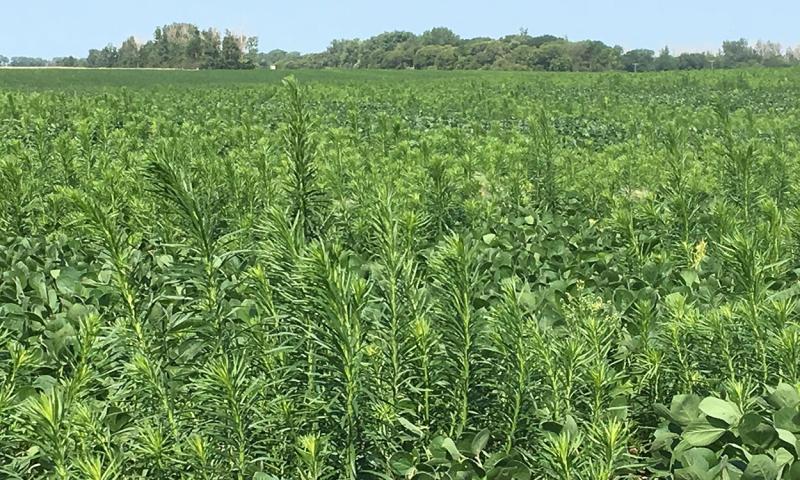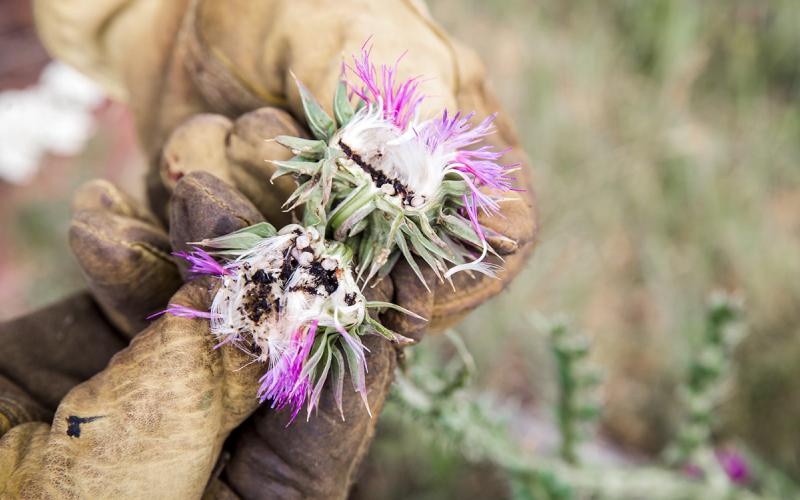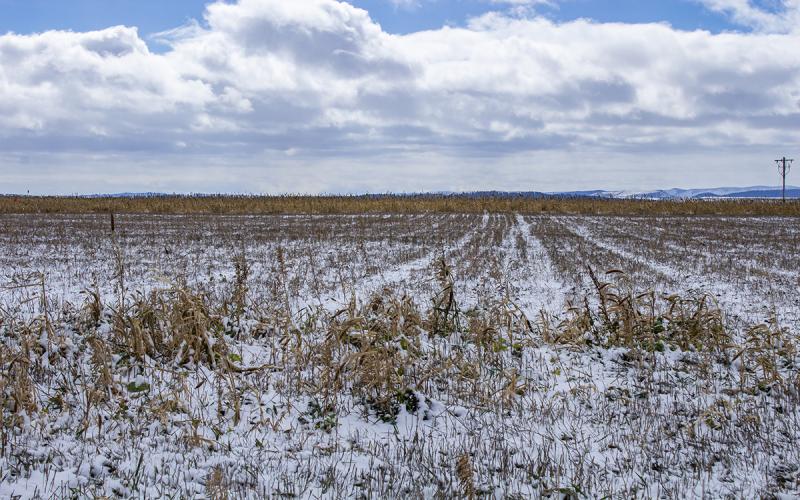
Originally written by Gared Shaffer, former SDSU Extension Weeds Field Specialist.
No-till crop production in South Dakota is on the rise. Marestail (also known as horseweed) is a native plant to the United States, and it is considered either a winter annual or biennial species that is often difficult to identify at the rosette stage. In the Dakota’s, marestail will germinate in the fall and bolt in the spring. The first leaves of marestail have a broad, round end and have a whorled leaf arrangement that forms a rosette. Small plants may be purple or green during cool weather. Marestail bolts in the spring. Leaves are alternate, hairy, one to four inches long, linear in shape and attached directly to the stem. Not letting marestail produce seed is of the utmost importance, because they can produce up to 200,000 seeds per plant. According to research, 20 to 91% of those seeds that germinate in the fall can survive through the winter.
A cost-effective fall burndown after harvest before a hard freeze could include a Dicamba product, glyphosate, 2,4D, Atrazine, Salflufenacil, Flumioxazin or a mixture of these depending upon what cash crop will follow in the spring. Atrazine, 2,4D, Salflufenacil, Flumioxazin and glyphosate work satisfactory under cool temperatures if no resistance is present in the weeds. Dicamba products do not work well under cool temperatures. Make dicamba applications when high temperatures are at least in the mid 50s. Controlling marestail in the spring burndown, pre-emergent or post-emergent applications in cash crops can be challenging for producers. Often these plants escape the burndown or pre-emergent applications and are not noticed until bolting. The most-successful treatments for control of marestail are in the fall, but if the species exists in your field in the spring, then options are available if field conditions allow application. South Dakota State University (SDSU) has not reported marestail glyphosate resistance; however, North Dakota State University has, so this is a possibility to be considered. Resistance can be slowed by rotating crops and herbicide programs. Other options would be to incorporate a cover crop between cash crops to help suppress winter annual and cool-season annual weeds.


